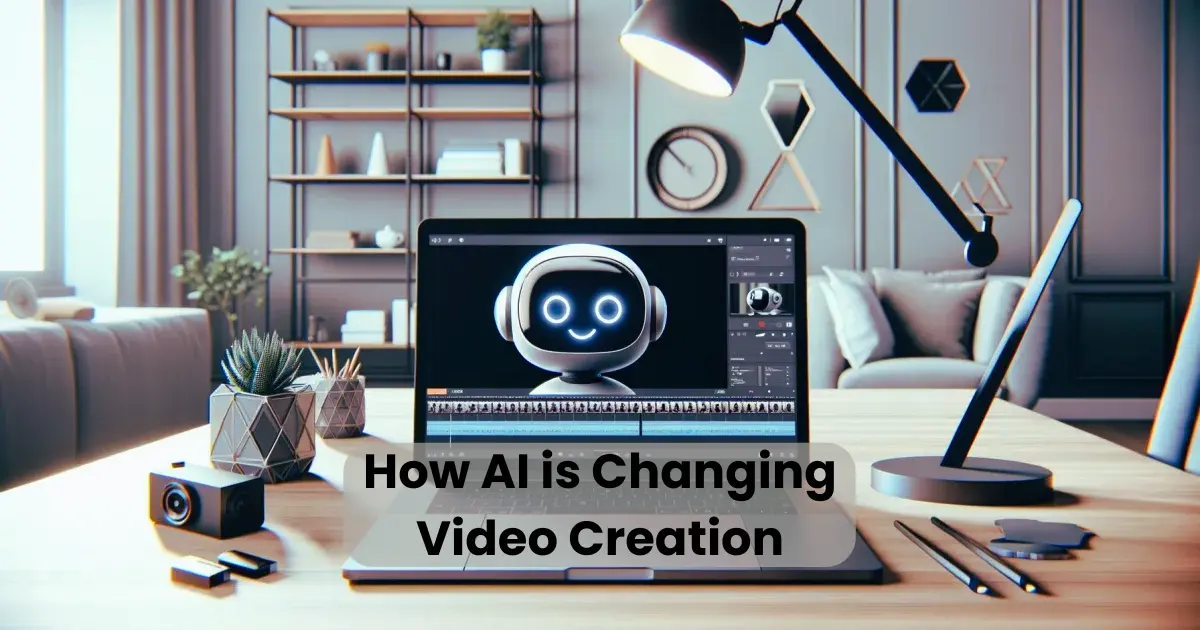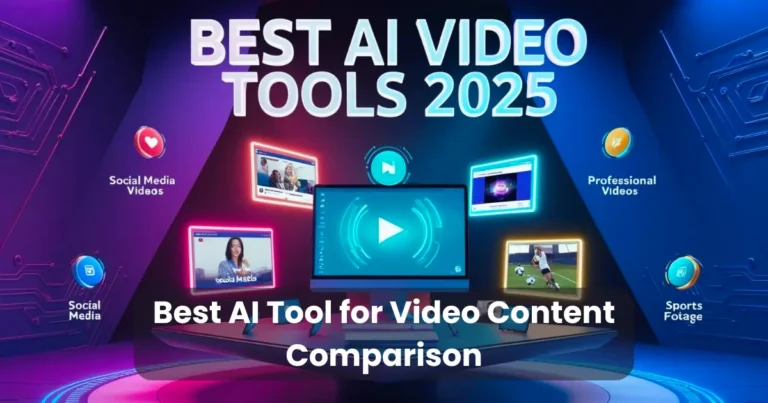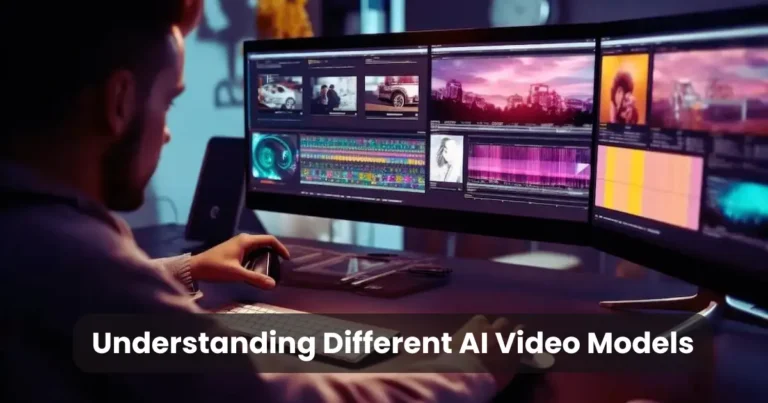How AI is Changing Video Creation

Contents
How AI is changing video creation is no longer just a futuristic idea it’s a present day reality reshaping the way we produce and consume content. From automated editing to AI generated scripts and virtual presenters, artificial intelligence is streamlining every step of the video production process. Content creators, marketers, and businesses are now leveraging powerful AI tools to save time, reduce costs, and enhance creativity. As the demand for video content continues to grow, understanding how AI is transforming this space becomes not only relevant but essential. In this article, we’ll explore the most groundbreaking ways AI is revolutionizing video creation and what that means for the future of digital storytelling.
The Rise of AI in Video Production
The rise of AI in video production marks a significant turning point in the content creation landscape. Until recently, producing high quality videos required a team of skilled professionals, expensive equipment, and countless hours of post production work. Today, however, AI has democratized the process, making video creation more accessible, efficient, and intelligent than ever before.
By integrating machine learning and computer vision, AI tools can now analyze footage, identify scenes, and even make editing decisions with minimal human input. Platforms like Pictory, Runway ML, and Magisto are already helping creators generate stunning videos with just a few clicks. These tools automate tasks like trimming, adding transitions, and syncing audio freeing creators to focus on storytelling rather than technical details.
Moreover, the growing reliance on AI-driven software reflects how AI is changing video creation across industries. Businesses use AI to generate promotional videos, educators develop AI-based training modules, and influencers rely on AI tools to maintain consistent content schedules. With AI handling repetitive tasks, the creative possibilities are expanding, allowing for faster turnaround and greater experimentation.
As AI continues to evolve, its role in video production will only grow more prominent. What once took days can now be accomplished in minutes all thanks to the rise of intelligent automation.
Automated Video Editing Tools
One of the clearest examples of how AI is changing video creation is through automated video editing tools. Traditionally, video editing demanded a high level of expertise, countless hours of manual labor, and costly software. Today, AI-powered editors are simplifying the process by automatically handling the most time-consuming tasks.

These intelligent tools can trim clips, detect scene changes, match background music to visuals, and even apply transitions or color corrections all with minimal user input. Platforms like Magisto, Wisecut, and Adobe Premiere Pro’s AI features use machine learning to understand content flow, facial expressions, and even emotional tone to produce polished, professional looking videos.
Furthermore, AI editing tools can generate multiple versions of the same video for different platforms. Whether it’s resizing for Instagram Stories or optimizing for YouTube, AI automates the adjustments, ensuring content is always platform ready. This flexibility saves creators from doing repetitive edits and speeds up delivery time.
By eliminating much of the manual workload, these tools not only make editing faster but also more accessible to those with limited technical skills. This innovation is a prime example of how AI is changing video creation, turning what was once a specialized task into something nearly anyone can do with ease.
AI-Powered Script Writing
Another exciting development in how AI is changing video creation lies in script writing. Traditionally, writing a compelling video script required time, creativity, and a deep understanding of audience engagement. Now, AI tools are transforming this process by generating high-quality scripts in seconds.

Advanced language models like ChatGPT, Jasper AI, and Copy.ai can craft video scripts based on a few simple prompts or keywords. These tools analyze tone, target audience, topic, and format to create tailored scripts for everything from product promos to explainer videos. As a result, creators can jumpstart projects with ready made content that’s both engaging and aligned with their brand voice.
Moreover, AI doesn’t just write it learns. By analyzing performance metrics and viewer preferences, AI can continuously optimize scripts for better results. This means that over time, your video content becomes more relevant and impactful.
For businesses with tight deadlines or limited creative teams, AI-powered script writing offers a significant advantage. It accelerates the planning phase, ensures consistency, and frees up human writers to focus on refining and storytelling rather than starting from scratch.
In essence, AI is not replacing creativity but enhancing it another clear indicator of how AI is changing video creation from the ground up.
Voiceovers and Synthetic Actors
A striking example of how AI is changing video creation is the emergence of AI-generated voiceovers and synthetic actors. Once a costly and time intensive part of production, voiceovers and on-screen talent are now more accessible and scalable thanks to artificial intelligence.

AI voice generators like Descript’s Overdub, Murf.ai, and Lovo can produce realistic, emotionally expressive voiceovers in dozens of languages and accents. These tools allow creators to generate voice narration with just a script no need to hire voice actors, book studios, or schedule recordings. The result is faster turnaround and significantly reduced costs.
At the same time, AI avatars and synthetic presenters are gaining popularity in explainer videos, e-learning modules, and corporate communications. Platforms such as Synthesia and Hour One let users create human-like digital presenters who can deliver scripted content convincingly. These avatars not only eliminate the need for on-camera talent but also provide consistency across multilingual or high-volume content campaigns.
This breakthrough technology enables global scalability while maintaining a professional appearance and tone. Brands can now deliver personalized, localized messages at scale—something that was once impractical or too expensive.
Clearly, the rise of AI voiceovers and synthetic actors is transforming the way creators approach production. It’s another powerful example of how AI is changing video creation, making high-quality storytelling more efficient, inclusive, and cost-effective.
Personalized Content Generation
Personalized content is no longer just a marketing buzzword—it’s a proven strategy to boost engagement. And now, how AI is changing video creation includes the ability to deliver hyper-personalized videos at scale. Thanks to AI, creators and brands can now tailor video content to individual viewers based on data such as location, behavior, preferences, or purchase history.
AI-powered platforms like Vidyard, Idomoo, and Pirsonal use dynamic content generation to swap out names, images, messages, and even voiceovers within a single video template. For instance, a customer could receive a birthday greeting video with their name spoken aloud and customized product recommendations—all auto-generated by AI.
This level of personalization was previously unthinkable due to time and resource constraints. But AI automates these processes, allowing marketers, educators, and content creators to connect with their audiences in a meaningful and scalable way.
Personalized videos are especially powerful in e-commerce, customer onboarding, and email marketing. They drive higher open rates, click-through rates, and conversions because viewers feel seen and valued.
Without a doubt, personalized content generation is a revolutionary advancement in how AI is changing video creation. It turns static communication into dynamic storytelling, fostering deeper connections and stronger results.
Enhancing Visual Effects with AI
Visual effects (VFX) have always been a cornerstone of captivating video content. Now, AI is revolutionizing this space, making it faster, more efficient, and far more accessible. One of the most transformative aspects of how AI is changing video creation is its ability to enhance and even automate complex visual effects.

AI tools can now perform tasks that once took VFX artists hours or days. For example, software like Runway ML, EbSynth, and Adobe After Effects’ AI features can automatically remove backgrounds, apply motion tracking, generate slow motion from standard footage, or simulate realistic effects with minimal input. These tools drastically cut down editing time while maintaining professional-level results.
Even more impressively, AI can generate entirely new visual assets—such as characters, environments, or textures—using generative models. Deep learning algorithms can upscale video quality, convert 2D footage into 3D simulations, or apply artistic styles frame by frame.
AI also plays a vital role in scene enhancement and correction. It can automatically adjust lighting, detect and fix visual inconsistencies, and color-grade footage to maintain a cohesive look throughout a project.
In short, AI doesn’t just speed up the post-production process—it expands what’s creatively possible. This leap forward in visual capabilities is yet another powerful way how AI is changing video creation, giving even small creators access to tools that rival big-budget studios.
Real-Time Video Analytics
One of the most game-changing innovations in how AI is changing video creation is the integration of real-time video analytics. In the past, video performance could only be measured after publishing. Now, AI enables creators and marketers to analyze viewer behavior as it happens, providing instant feedback to optimize content and strategy.
AI-driven platforms like Veed.io, Wistia, and Brightcove offer deep insights into audience engagement—tracking metrics like watch time, drop-off points, click-through rates, and even viewer sentiment. These tools allow creators to identify which scenes hold attention, which lose it, and how to improve future content in response.
Real-time analytics also supports adaptive content delivery. For example, AI can adjust the video length, format, or call-to-action dynamically based on how the viewer is interacting with it. This kind of on-the-fly optimization ensures the content remains relevant and impactful for every individual viewer.
Moreover, brands can use this data to make evidence-based decisions on content strategy, improving ROI on video marketing campaigns. Whether it’s A/B testing thumbnails or refining storytelling techniques, AI analytics provides the intelligence needed to drive results.
Clearly, real-time video analytics is a vital piece of the puzzle in how AI is changing video creation. It empowers creators with data-driven decisions, allowing for faster, smarter, and more responsive content strategies.
Cost and Time Efficiency
One of the most compelling reasons how AI is changing video creation lies in its remarkable ability to save both time and money. Video production has traditionally been resource-intensive, often requiring large teams, expensive equipment, and lengthy editing phases. AI tools are shifting this dynamic by automating many labor-intensive tasks and streamlining workflows.

For instance, AI-powered editing software can complete tasks such as cutting, color grading, and audio syncing in a fraction of the time it takes a human editor. This speed allows creators to meet tight deadlines and produce more content without sacrificing quality. Additionally, AI eliminates the need to hire large crews or rent costly studios, which significantly reduces overall production costs.
Small businesses and independent creators especially benefit from these efficiencies. With AI, they can compete with larger companies by producing professional-grade videos on modest budgets and schedules. Moreover, faster turnaround times mean marketers can quickly adapt campaigns in response to trends or audience feedback.
By reducing the barriers of time and cost, AI is democratizing video creation, making it accessible to a broader range of people and industries. This shift illustrates one of the most practical and transformative ways how AI is changing video creation today.
The Future of AI in Video Creation
The future holds exciting possibilities for how AI is changing video creation, with continuous advancements poised to further revolutionize the industry. As AI technologies become more sophisticated, video production will become increasingly automated, personalized, and immersive.

Emerging AI-driven innovations like real-time virtual reality (VR) environments, fully interactive videos, and AI-assisted creative brainstorming will open new frontiers for storytelling. Imagine directors collaborating with AI to instantly visualize scenes or audiences engaging with videos that adapt dynamically to their reactions.
Additionally, as generative AI models improve, creators will have unprecedented freedom to generate entire films, animations, or commercials with minimal human input—shifting the role of humans more towards curators and creative guides. This shift will empower smaller teams and individual creators to produce content at scale that rivals traditional studio productions.
However, this future also demands careful consideration of ethical challenges such as content authenticity, deepfakes, and data privacy. Responsible AI use and transparent guidelines will be critical to ensure trust and creativity coexist harmoniously.
Overall, the future of AI in video creation promises to be transformative, offering innovative tools that expand creative possibilities while making video production more efficient and accessible than ever before.
Conclusion
In conclusion, how AI is changing video creation is nothing short of revolutionary. From automating tedious editing tasks and generating personalized content to creating lifelike synthetic actors and enhancing visual effects, AI is reshaping every stage of the video production process. These advancements not only boost efficiency and reduce costs but also unlock new creative possibilities for professionals and amateurs alike.
As AI continues to evolve, it will further democratize video creation, enabling more people to tell their stories in innovative and impactful ways. However, embracing this technology also requires mindfulness about ethical considerations and responsible use.
By staying informed and adaptable, creators and businesses can leverage AI’s power to produce engaging, high-quality videos that resonate with their audiences. Ultimately, understanding how AI is changing video creation is key to staying ahead in today’s fast-paced digital world.






